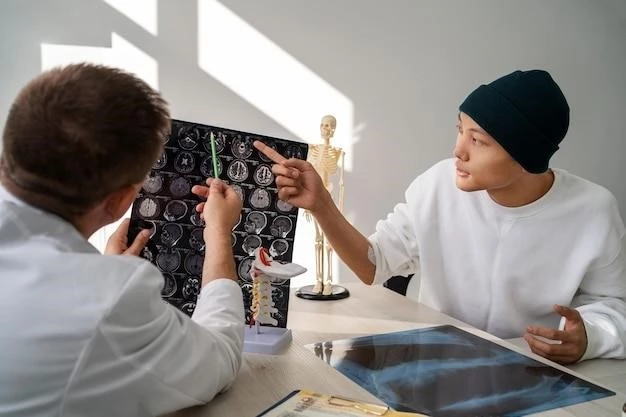Edwards–Patton–Dilly Syndrome
Edwards–Patton–Dilly syndrome is a rare genetic disorder characterized by a combination of skeletal abnormalities, intellectual disability, developmental delays, heart defects, short stature, joint problems, curved spine, and distinctive facial features. Individuals with this syndrome may also experience speech delay.
Diagnosis of Edwards–Patton–Dilly syndrome involves genetic testing to confirm the specific genetic mutations associated with the disorder. Clinical evaluation is essential to identify the range of symptoms present in each affected individual.
Treatment and management of Edwards–Patton–Dilly syndrome typically involve a multidisciplinary approach. This may include physical therapy to address skeletal abnormalities, occupational therapy to improve daily living skills, and speech therapy to support communication development.
The prognosis for individuals with Edwards–Patton–Dilly syndrome varies depending on the severity of symptoms and the effectiveness of medical management. Early intervention and ongoing support can significantly improve the quality of life for affected individuals and their families.
Introduction
Edwards–Patton–Dilly syndrome, named after the three physicians who first described it, is a rare genetic disorder that affects multiple systems in the body. Individuals with this syndrome typically present with a constellation of symptoms that can include skeletal abnormalities, intellectual disability, developmental delays, and heart defects.
One of the hallmark features of Edwards–Patton–Dilly syndrome is short stature, which is often accompanied by joint problems and a curved spine (scoliosis). These physical characteristics, along with distinctive facial features such as a prominent forehead, downslanting eyes, and a small chin, can aid in the clinical diagnosis of the syndrome.
In addition to the physical attributes, individuals with Edwards–Patton–Dilly syndrome may experience delays in speech development. The interplay of these various symptoms requires a comprehensive approach to diagnosis, treatment, and management.
Given the complexity of Edwards–Patton–Dilly syndrome, a better understanding of the underlying genetic mutations responsible for the condition is crucial for accurate diagnosis and personalized care. Through genetic testing, healthcare providers can pinpoint the specific genetic alterations associated with the syndrome, paving the way for targeted therapies and interventions.
While Edwards–Patton–Dilly syndrome is rare, its impact on individuals and families can be significant. By exploring the clinical features, diagnostic methods, treatment options, and prognosis of this syndrome, we aim to enhance awareness and knowledge surrounding this condition, ultimately improving outcomes for those affected by it.
Clinical Features
Edwards–Patton–Dilly syndrome manifests with a spectrum of clinical features that involve multiple organ systems. Skeletal abnormalities are a prominent aspect of the syndrome, with individuals commonly exhibiting short stature, joint problems, and a curved spine (scoliosis).
Intellectual disability is a key characteristic of the syndrome, often accompanied by developmental delays in motor skills, speech, and cognitive abilities. Individuals with Edwards–Patton–Dilly syndrome may require educational and developmental support tailored to their specific needs.
Heart defects are another common feature of the syndrome, ranging from structural abnormalities to functional issues. Due to the variability in heart involvement, regular cardiac evaluations are essential for monitoring and managing potential cardiac complications.
Distinctive facial features are often observed in individuals with Edwards–Patton–Dilly syndrome, including a prominent forehead, downslanting eyes, a small chin, and other facial dysmorphisms. These characteristics can aid in the clinical recognition and diagnosis of the syndrome.
In addition to the physical and cognitive symptoms, speech delay is frequently reported in individuals with Edwards–Patton–Dilly syndrome. Speech therapy interventions can help improve communication skills and enhance overall quality of life for affected individuals.
A comprehensive understanding of the varied clinical features of Edwards–Patton–Dilly syndrome is essential for accurate diagnosis, treatment planning, and ongoing management of the condition. Through a multidisciplinary approach, healthcare providers can address the complex needs of individuals affected by this rare genetic disorder.
Diagnosis
Diagnosing Edwards–Patton–Dilly syndrome involves a thorough evaluation of the clinical features present in the affected individual. Genetic testing plays a crucial role in confirming the specific genetic mutations associated with the syndrome, aiding in accurate diagnosis and understanding of the condition’s underlying cause.
Clinical assessment often includes detailed physical examinations to identify skeletal abnormalities such as short stature, joint issues, and scoliosis. Additionally, cognitive and developmental assessments are essential for evaluating intellectual disability and developmental delays commonly seen in individuals with the syndrome.
Heart defects, another hallmark feature of Edwards–Patton–Dilly syndrome, require comprehensive cardiac evaluations, including echocardiography and other cardiac imaging modalities, to assess the extent and impact of any cardiac abnormalities.
Distinctive facial features, including a prominent forehead, downslanting eyes, and a small chin, can also aid in the clinical diagnosis of Edwards–Patton–Dilly syndrome. These physical characteristics may prompt further genetic testing to confirm the presence of associated genetic mutations.
Given the complexity of symptoms and the rarity of the syndrome, a multidisciplinary approach involving geneticists, pediatricians, cardiologists, and other specialists is often necessary for a comprehensive evaluation and accurate diagnosis of Edwards–Patton–Dilly syndrome.
By employing a combination of clinical assessments, genetic testing, and interdisciplinary collaboration, healthcare providers can establish a definitive diagnosis of Edwards–Patton–Dilly syndrome, enabling the initiation of appropriate treatment strategies and personalized care plans for affected individuals.
Treatment and Management
The treatment and management of Edwards–Patton–Dilly syndrome necessitate a multidisciplinary approach to address the diverse array of symptoms and challenges faced by individuals with this rare genetic disorder. Physical therapy plays a crucial role in managing skeletal abnormalities such as short stature, joint problems, and scoliosis.
Occupational therapy interventions are essential for promoting independence and improving daily living skills in individuals with Edwards–Patton–Dilly syndrome. These therapies focus on enhancing fine motor skills, sensory processing, and adaptive strategies to optimize functional abilities.
Speech therapy is often recommended to address speech delays and communication difficulties associated with the syndrome. Speech therapists work with individuals to improve language skills, articulation, and social communication, enhancing overall quality of life and participation in daily activities.
Medical management of Edwards–Patton–Dilly syndrome involves regular monitoring of heart defects and other associated health issues. Cardiologists play a significant role in managing cardiac abnormalities and ensuring optimal heart health through medication, procedures, or surgery when necessary.
Genetic counseling is crucial for individuals and families affected by Edwards–Patton–Dilly syndrome. Genetic counselors provide valuable information about the genetic basis of the condition, inheritance patterns, and risk assessment, guiding families in making informed decisions about family planning and genetic testing.
By combining physical therapy, occupational therapy, speech therapy, medical monitoring, and genetic counseling, healthcare teams can create tailored treatment plans that address the specific needs of individuals with Edwards–Patton–Dilly syndrome. Early intervention and comprehensive management strategies are key to optimizing outcomes and enhancing the overall well-being of affected individuals.
Prognosis
The prognosis for individuals with Edwards–Patton–Dilly syndrome varies based on the severity of symptoms, the presence of associated health issues, and the effectiveness of medical management and interventions. Early diagnosis and intervention play a crucial role in improving outcomes and quality of life for affected individuals.
While the syndrome is associated with significant challenges, including skeletal abnormalities, intellectual disability, and heart defects, proactive treatment approaches can help address these issues and enhance overall well-being. Physical therapy interventions aim to improve mobility, posture, and overall functioning.
Occupational therapy focuses on promoting independence in daily activities, enhancing fine motor skills, and facilitating participation in social and educational settings. Speech therapy interventions target communication difficulties, aiding individuals in developing language skills and establishing effective communication strategies.
Regular medical monitoring of heart defects and other health conditions is vital for managing potential complications and ensuring optimal cardiac function. With prompt and appropriate medical management, individuals with Edwards–Patton–Dilly syndrome can lead fulfilling lives and achieve their developmental potential.
Genetic counseling provides valuable support to families, offering information on the genetic basis of the syndrome, inheritance patterns, and available testing options. This empowers families to make informed decisions about family planning and genetic risk assessment.
By combining early intervention, multidisciplinary care, and ongoing support, the prognosis for individuals with Edwards–Patton–Dilly syndrome can be significantly improved. Continued research and advancements in medical management and therapies offer hope for enhanced outcomes and quality of life for those affected by this rare genetic disorder.

